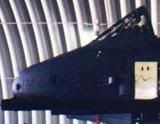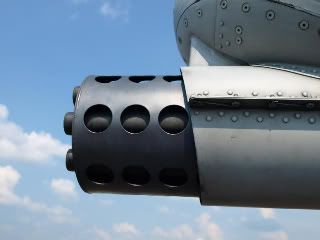|
Well, I guess this F-111 story is appropriate to post, then...Subject: FW: "Still Burnin', Ed" SAC
A little piece of AF history that you probably won't read about in any of the history books!
During the early 1970s, SAC's SIOP added a new twist to complicate the Soviet targeting problem by placing some of its FB-111As from Pease AFB, New Hampshire and Plattsburgh AFB, New York, at K.I. Sawyer AFB and Wurtsmith AFB, Michigan, respectively. Initially, six aircraft were placed on satellite alert, then this number was reduced to three. While the aircraft 'Huismann, Sue' remained, aircrews and maintenance personnel were rotated through for TDY on a weekly basis. At K.I. Sawyer, there were B-52s and KC-135s assigned to the 410th Bombardment Wing. In addition, the 87th Fighter Interceptor Squadron, equipped with Convair F-106s, was stationed at the base. Each had its own alert facilities. For the FB-111As SAC built an alert facility, including six alert hangars. This SAC program was terminated in late 1974 or 1975.
While TDY, the FB-111 crews ran circles around the lumbering B-52s because of the vast performance differences between the two aircraft. When the last week of FB-111 satellite alert was being pulled, the B-52 crews asked if there would be a departure airshow.
The reply was a resounding "Hell yes!"
Apparently word of their plans got back to the 509th Bombardment Wing headquarters at Pease, because there was a sudden configuration change ordered by the Deputy Commander for Operations (DO). The FB-111s were to be loaded with four external fuel tanks and a pair of SRAMs (unarmed) in the bomb bay. This combination raised the gross weight of the aircraft to 100,000 lbs. And limited the wing sweep to a mere 26 degrees because the outboard pylons did not swivel. This configuration was not conducive to an airshow departure. Realizing this, the B-52 crews went on the attack, calling the FB-111s "mini-BUFFs."
The pride of the FB-111 community was at stake, but they could see no way to redeem themselves. The flight leader, Major Ed (name changed to protect the innocent) kept mumbling that there would be an airshow. The major was facing a RIF within a few months. In addition, his navigator/bombardier Captain Bobby (name changed to protect the innocent), preferred the violin to tactics and he had been passed over for promotion to major.
This combination was a DO's worst nightmare-a seasoned crew with nothing to lose!
During the taxi-out the lead aircraft developed a problem and pulled off to the side. No. 2 took the lead and the two-ship FB-111 formation lumbered into the air and wallowed back to Pease AFB. Miraculously, the problem was resolved and No. 1 called for a takeoff. This aircraft also lumbered into the sky. The takeoff was uneventful. As the gear was coming up the pilot called for a closed pattern to return to the field. The tower, assuming the problem had returned, cleared the aircraft. The pilot then asked for an extended downwind, which was also granted. It was late in the year and K.I. Sawyer had placed 10' tall pine trees which had been cut from a local forest at the 1,000' markers as an aid when the harsh winter snows come to the base.
The aircraft was on an extended final with enough fuel to head out across the Atlantic. With fuel to burn, he lit the afterburners and pushed the aircraft up to the tank limit speed of 0.9 Mach/600+ mph. The aircraft came over the runway overrun at 50' and the pilot flipped on the fuel dump. It was reported that his fiery plume was a quarter of a mile long!
The major kept the aircraft on the deck for the entire length of the runway, pulled the ship into the vertical doing a series of fiery aileron rolls. As he leveled out he called to his partner, "How'd it look, Bobby?"
The unexpected reply was "Still burnin', Ed!" The major rolled over to view his handy work. All 12 pairs of evergreens were burning. In addition, the reverted rubber on the runway was aflame. Needless to say, the field was temporarily closed.
The crew made it back to Pease in 45 minutes. Nothing was said about the incident. The major made a surreptitious call back to the alert-hangar controller and asked about the situation, to which he heard the reply,"Still burnin', Ed!" The fire lasted more than an hour. The major laid low around the squadron for several weeks, but nothing was said.
Several months later, there was a retirement party for the major. The DO went through the obligatory rituals. Then he leaned over and whispered in Ed's ear, "Still burnin, Ed!"
As a footnote, K.I. Sawyer's history recorded a cost saving because they did not have to perform their annual runway cleaning.
A sucking chest wound is life's way of telling you to slow down...
|








